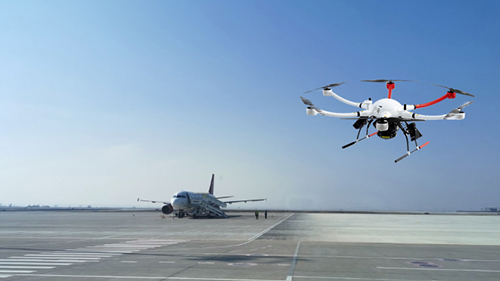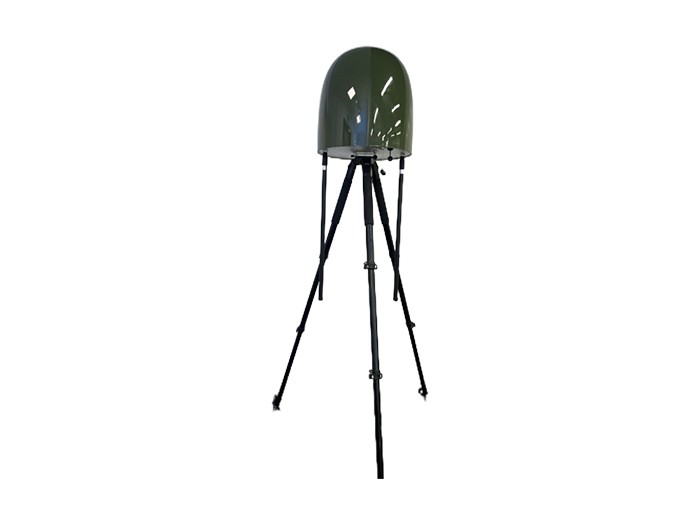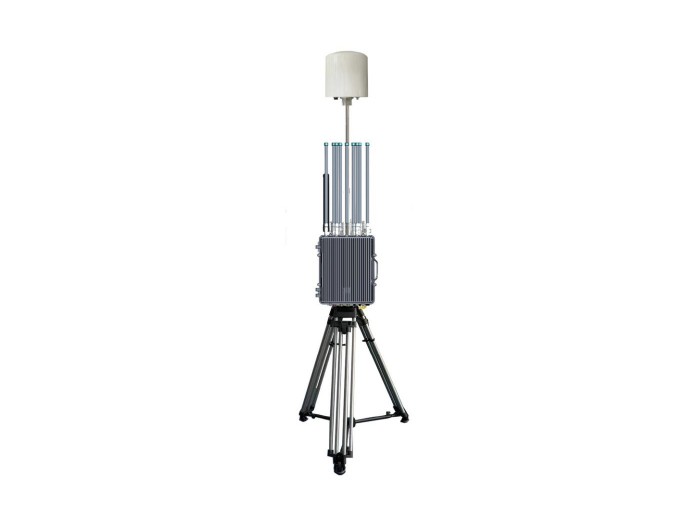Unmanned Aerial Vehicle Frequency Detector Networks for 5G and Beyond
As 5G technology rapidly expands and the rollout of 6G looms on the horizon, network operators and industries face evolving challenges in managing spectrum usage and ensuring seamless wireless communication. One critical scenario involves monitoring and detecting frequency interference, especially in dense urban environments and remote areas where traditional ground-based detectors have limitations. Unmanned Aerial Vehicle (UAV) frequency detector networks offer a cutting-edge solution by enabling dynamic, aerial spectrum analysis and interference detection tailored for 5G and future wireless technologies. In this article, we explore how UAV-based frequency detector networks enhance spectrum management, improve network reliability, and support the growing demands of 5G and beyond. Dive in to understand why these innovative systems are becoming indispensable in modern telecommunications infrastructure.
Understanding UAV Frequency Detector Networks in 5G Context
UAV frequency detector networks consist of fleets of drones equipped with sophisticated signal detection and spectrum analysis tools. These unmanned aerial vehicles can quickly cover vast geographic areas, scanning frequency bands used in 5G communications. Unlike static or limited ground sensors, UAVs dynamically adjust their position and altitude, providing real-time data on signal strength, interference sources, and spectrum occupancy.
For 5G networks, which rely on higher frequency bands such as millimeter waves (mmWave) that are highly susceptible to obstacles and interference, UAV frequency detectors are invaluable. For example, a study by the IEEE Communications Society highlighted that mmWave bands require precise line-of-sight and interference management to maintain optimal throughput. UAVs help identify unexpected interference from unauthorized transmitters or environmental factors, enabling network operators to respond swiftly.
This technology is particularly beneficial in metropolitan areas, smart cities, and during large-scale events where temporary spectrum congestion is common. Moreover, with 6G on the horizon aiming to utilize terahertz frequencies, UAV frequency detection networks will become even more critical in navigating new spectrum frontiers.
Key Benefits of UAV Frequency Detector Networks for 5G and Beyond
Implementing UAV frequency detector networks offers multiple tangible benefits that directly enhance 5G network performance and pave the way for future advancements:
- Enhanced Spectrum Visibility: UAVs provide comprehensive, real-time monitoring of frequency bands, enabling precise detection of interference hotspots and unauthorized transmissions that could degrade service quality.
- Rapid Deployment and Scalability: UAVs can be quickly deployed during network rollouts or emergency situations to assess spectrum conditions without the need for extensive ground installations.
- Improved Network Reliability: Continuous aerial surveillance helps operators preemptively manage interference and optimize spectrum allocation, contributing to reduced dropped calls and faster data speeds.
- Cost Efficiency: Compared to traditional fixed sensors, UAV networks reduce infrastructure costs and maintenance by maximizing coverage with fewer units.
- Support for Edge and IoT Devices: Given the proliferation of Internet of Things (IoT) devices relying on 5G, UAV frequency detectors ensure these critical connections remain stable by detecting and mitigating spectrum conflicts.
According to a market research report by MarketsandMarkets, the drone-based communication market is projected to grow from USD 5.3 billion in 2023 to over USD 12 billion by 2030, underscoring the rising importance of UAV technology in telecommunications.
Applications and Use Cases Driving UAV Frequency Detection Networks
The versatility of UAV frequency detector networks enables diverse applications supporting both telecommunications providers and regulatory bodies:
- Interference Detection and Spectrum Enforcement: Regulatory agencies utilize UAVs to detect illegal signal transmissions and enforce spectrum policies, ensuring fair use and preventing harmful interference to licensed 5G bands.
- Network Planning and Optimization: Telecom operators deploy UAV frequency detectors to map out signal propagation, optimize antenna placements, and refine small cell deployments, especially in cluttered urban environments.
- Disaster Recovery and Temporary Networks: In post-disaster scenarios where ground infrastructure is damaged, UAVs assist in rapidly assessing spectrum and establishing temporary communication nodes to maintain connectivity.
- Security Surveillance: UAVs monitor frequency activities around critical infrastructure to detect jamming or spoofing attempts that could compromise 5G security.
- Industrial IoT and Smart City Management: UAVs provide continuous spectrum monitoring for dense IoT deployments, ensuring signal integrity in smart grids, autonomous vehicles, and connected public services.

For instance, a telecommunications company in South Korea successfully incorporated UAV frequency detectors during the launch phase of their 5G network, reducing interference-related complaints by 30% within the first six months post-deployment.
Future Trends: Integrating AI and Edge Computing with UAV Frequency Detection
As 5G networks evolve, integrating artificial intelligence (AI) and edge computing into UAV frequency detector networks represents the next transformational step. AI algorithms enable drones to autonomously identify complex interference patterns and predict spectrum availability, vastly improving detection speed and accuracy.
Moreover, edge computing allows data processing directly on UAVs or nearby edge nodes, minimizing latency and enabling real-time actionable insights. This synergy is critical to addressing the ultra-reliable low-latency communication (URLLC) requirements of advanced 5G applications such as autonomous vehicles and remote surgery.
According to a TechNavio forecast, AI-powered drone deployment in telecommunications is expected to rise by 18% annually through 2027, highlighting how AI integration will enhance UAV frequency detection capabilities. This trend will further facilitate adaptive spectrum management, dynamic beamforming, and coordinated multi-UAV operations for comprehensive network monitoring.
- Deploy UAV frequency detector networks for proactive spectrum monitoring to reduce interference in 5G environments.
- Incorporate AI and edge computing for advanced real-time interference detection and automated network optimization.
- Use UAV-based detection to support regulatory compliance and rapid enforcement against unauthorized frequency users.
- Leverage UAV insights to enhance smart city infrastructure and robust IoT connectivity.
- Contact our team for personalized consultation on implementing UAV frequency detection tailored to your network needs.
Want to learn more about UAV frequency detector networks and their impact on 5G and beyond? Visit our website for detailed case studies and expert resources!
Conclusion: Embrace UAV Frequency Detector Networks for Future-Ready 5G Connectivity
In conclusion, unmanned aerial vehicle frequency detector networks are revolutionizing how spectrum is monitored and managed in the era of 5G and forthcoming wireless technologies. Their mobility, advanced sensing capabilities, and integration with AI and edge computing provide unmatched advantages in detecting interference, optimizing networks, and enforcing regulatory policies. Telecommunications operators and regulators alike should prioritize adopting UAV frequency detection systems to ensure resilient, high-performance wireless connectivity that meets modern-day demands.
Empower your network with innovative UAV frequency detection solutions today. Visit our website now or contact us for a free consultation to discover how our expertise can help you stay ahead in the wireless communication landscape.

















